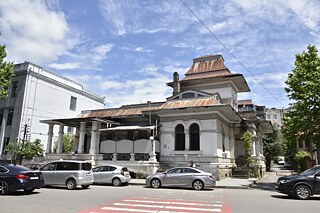Kutaisi
The physical mapping process for the municipality included both theoretical and practical aspects for two months. Experts, along with the educational component of the developed mapping methodology, mentored the municipality’s working group through each step of the process.
A detailed list of buildings and spaces was created. To collect information about these objects, research was conducted through inter-sectoral cooperation, fieldwork, and photofilming. The gathered data was then analyzed and recorded on a digital map, and the results were presented.
A detailed list of buildings and spaces was created. To collect information about these objects, research was conducted through inter-sectoral cooperation, fieldwork, and photofilming. The gathered data was then analyzed and recorded on a digital map, and the results were presented.
Physical Mapping Results
In the municipality of Kutaisi, of the 54 listed properties, 33% are industrial and production infrastructure, and 22% are cultural and creative spaces. Educational and research institutions make 17%, transportation infrastructure accounts for 7%, administrative buildings comprise 4%, and sports facilities represent 2%. Additionally, other types of properties account for 9%.
The usage of listed properties follows as 33% in active use, 30% are partially utilized, and 37% are nonfunctional.
From the complete list of buildings, 18% are structurally stable, 43% have minor damage, 22% are severely damaged, and 17% have been rehabilitated.
Ownership of these properties is distributed as follows: 17% are privately owned, 33% are state-owned, 22% are municipally owned, 26% have mixed ownership, and 2% are unregistered.
Among the notable properties are the former barracks building, the former tractor factory, the former knitwear factory, the confectionery, the conservatory building, the post office building, the cultural center of the former Electromechanical Factory, the former railway station in Sapichkhia, the former club building in Gumati, and the nonfunctional building near the Red Bridge.
The usage of listed properties follows as 33% in active use, 30% are partially utilized, and 37% are nonfunctional.
From the complete list of buildings, 18% are structurally stable, 43% have minor damage, 22% are severely damaged, and 17% have been rehabilitated.
Ownership of these properties is distributed as follows: 17% are privately owned, 33% are state-owned, 22% are municipally owned, 26% have mixed ownership, and 2% are unregistered.
Among the notable properties are the former barracks building, the former tractor factory, the former knitwear factory, the confectionery, the conservatory building, the post office building, the cultural center of the former Electromechanical Factory, the former railway station in Sapichkhia, the former club building in Gumati, and the nonfunctional building near the Red Bridge.






